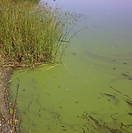Health
Many environmental issues can have potential impacts on human and ecological health. Exposure to environmental contaminants can be acute and short term, or chronic, at low rates over long periods of time. BlueLeaf works with its research partners to investigate the role of aquatic contaminants on human and ecological health, particularly as relates to chronic, low dose exposures over lengthy periods of time.

Contaminants of Emerging Concern
Chemicals are being discovered in water that previously had not been detected, or are being detected at levels that may be significantly different than expected. These are generally referred to as “contaminants of emerging concern” (CECs) because the risk to human health and the environment associated with their presence, frequency of occurrence, or source may not be known.
BlueLeaf works with its customers and research partners to better understand the presence and fate of these contaminants in aquatic environments.

Antibiotic resistance
Antibiotic resistance is a serious and growing problem. A recent World Health Organization report states, "this serious threat is no longer a prediction for the future, it is happening right now in every region of the world and has the potential to affect anyone, of any age, in any country. Antibiotic resistance–when bacteria change so antibiotics no longer work in people who need them to treat infections–is now a major threat to public health.
BlueLeaf works with its research partners to better understand the role of aquatic environments in antibiotic resistance.

Cyanotoxins & cyanobacteria
Now a common site in ponds and lakes during summer months, cyanobacteria can produce cyanotoxins which are a potential risk to humans and wildlife.
BlueLeaf helps its customers and partners evaluate specific situtations and works with them to develop and propose means of prevention and remediation.

Special needs of the unborn
Because of the risk of exposure to contaminants at critical periods of development, pregnant mothers and the unborn are especially vulnerable. Protecting them from environmental contaminants is of utmost importance.
With its research partners, BlueLeaf works to evaluate the occurence and potential pathways of exposure of vulnerable populations to aquatic environment contaminants.
